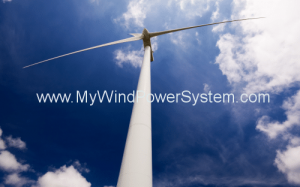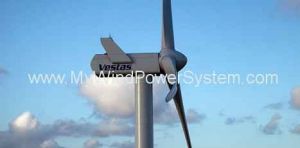Wind turbine blades are the heart and soul of a wind turbine. Have you ever wondered what wind turbine blades are made from? In my ignorance, I thought it was aluminium, the same as aeroplanes. In fact, the very earliest prototype wind turbine blades were made from a variety of materials, including balsa wood, Bakelite (an early version of plastic) and rubber.
The technology used in manufacturing wind turbine blades has evolved over the past few decades. Blade making has evolved toward processes that make production cheaper and eliminate any manufacturing defects. Wind and the seas- what’s the connection- well, early turbine blade-building techniques grew out of the boat-building industry, using processes that were highly labour-intensive and prone to faults, flaws, inconsistencies and defects.
Vacuum infusion was the next step forward and it took blade manufacturing technology to a higher level, with improvements in the consistency and performance of a blade. Pre-impregnated technology further enhanced blade performance by combining resins and reinforcements in a more rigorously controlled manner before placement in the blade mould. These days the trend is toward Automated Tape Layup (ATL) or Automated Fibre Placement (AFP) to reduce labour and improve quality, yet the creation of blades is still a high-quality spot-on qualitative process.
Resin technology has expanded to include both polyester and epoxy. Wood or foam cores are still used in many cases. Skins are comprised of multi-axial fabrics.
Currently, the three-blade, horizontal-axis rotor dominates. The rotor blades are mainly made of glass-fibre or carbon-fibre-reinforced plastics (GRP, CFRP). The blade profile is similar to that of an aeroplane wing. They use the same principle of lift: on the lower side of the wing, the passing air generates higher pressure, while the upper side generates a pull. These forces cause the rotor to move forwards, and thus to rotate.

These companies have reported that a new system of turbine blade production is based on DSM’s Beyond 201-A-01 resin, which brings faster and more robust resin infusion and curing. A better fibre/resin interaction and composition have been obtained, resulting in improved composite properties for a longer-lasting blade operation. Siemens Wind Power is now evaluating the new material system for its next-generation wind turbine blades.
Siemens’ Karsten Schibsbye said:
“For Siemens, the new composite system provides many benefits, including a major reduction in blade manufacturing cost and an increased process output.”
The result, according to the coalition, is easy blade manufacturing, low weight, high stiffness, and excellent resistance to fatigue- long a problem for turbines; the blades are often the first to succumb to wear and tear. This material system is being evaluated by Siemens Wind Power for its next-generation wind turbine blades. The system received the 2014 Innovation Award from JEC in the Sustainability category, which probably means this is ground-breaking technology and others will follow suit.
“Peace of mind is what the new system brings to energy providers,” says Povl Brøndsted of DTU Wind Energy, “as the resilient material system means the blades keep turning day after day producing energy.”
“The JEC show in Paris is at the beating heart of the Global Composites industry”, comments Fons Harbers, Commercial Director EMEAI DSM Composite Resins. “We are delighted that the new composite system has received such an important award and got the industry recognition it deserves”.
Will other turbine manufacturers take up the challenge? Of course!


